World Cities series #Abu Dhabi
Abu Dhabi is geographically located on the north-eastern part of the Persian Gulf in the Arabian Peninsula. The island city is located just 250 metres from the mainland which consists of many other suburbs linked to the emirate, Abu Dhabi. A special feature of the city includes the Abu Dhabi Corniche which offers the chance to walk, cycle or jog along the island’s coastline which has a breathtaking view.
The emirate of Abu Dhabi is bordered by the Kingdoms of Oman to the east, Saudi Arabia to the south and Dubai to the northeast. A major city in Abu Dhabi is Al Ain, which is the capital of the eastern region of the emirate, located near the striking Hajar Mountains, this city shares the border with the Sultanate of Oman. The western region of Abu Dhabi comprises of over 50 villages, with the capital being Zayed City and the main onshore oil fields are located here. | The two main bridges, Maqta and Mussafah, connect the island of Abu Dhabi city to the mainland, with others currently being constructed. There are around 200 islands which fall under Abu Dhabi territory, some of the major ones include, Saadiyat, Al Futaisi, and Sir Bani Yas Island.
Abu Dhabi’s coastline extends to over 600 kilometres and occupies a significant percentage of the landmass. The emirate of Abu Dhabi covers an area of around 67, 340km², which comprises mostly of desert, including part of the Empty Quarter, Rub Al Khali and salt flats/sabkha.
Abu Dhabi has an impressive population of 2.657 million. The population of Abu Dhabi grew at the rate of 9.5%. Out of 2.657 million residents, 19.1% are citizens.
History
Abu Dhabi’s most significant settlement was those of the Bani Yas Bedoiun tribe which were located by the coast around the 16th Century. Afterwards, the discovery of fresh water led the tribe to relocate to the island which was more fertile with large quantities of wildlife. Soon after, the ruling Al Nahyan family decided to flee to the island also.
Under the rule of Sheikh Zayed bin Khalifa, Abu Dhabi thoroughly developed through the trading of pearls, and in 1892 came the very first exclusive treaty linking Abu Dhabi with Great Britain. The emirates location was seen as a great strategic convenience connecting it with India and the east, and it was established as the Trucial coast.
Whilst Abu Dhabi’s wealth was looking on the upside, it was badly hit by the intervention of Japan’s pearl industry and also by the 1930’s global recession. Furthermore, Sheik Zayed bin Khalifa passed away which added more uncertainty to Abu Dhabi’s prosperity.
However, this was not the end of Abu Dhabi’s fortunes. In 1939 Sheikh Shakhbut bin Sultan Al Nahyan granted petroleum concession to the Trucial Coast Development Oil Company, (renamed the Abu Dhabi Petroleum Company, ADPC, in 1962) in a bid to search for large oil reserves. In 1958, huge offshore oil reserves were discovered and a year later onshore reserves were also found. It was not until 1962 that the oil exports began, leading Abu Dhabi on to the road of unbelievable wealth.
In 1966 Sheik Zayed bin Sultan Al Nahyan became the new ruler of Abu Dhabi and two years later he formed the federation of the United Arab Emirates, which was in response to the British threatening to withdraw from the region by the end of 1971. The ruler of Abu Dhabi realised that his connection with Britain was vital in order to maintain a strong position in the oil industry. Sheikh Zayed bin Sultan Al Nahayan was elected as the first president and with the assistance of the British started to carry out his vision of developing the country with the advantage of increased oil revenues.
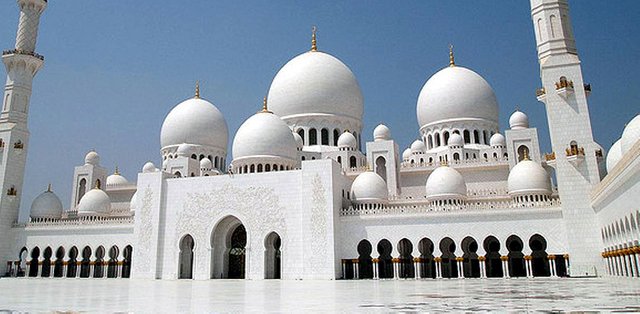
Abu Dhabi The Great Mosque
Father of the Nation
Sheikh Zayed was known as the ‘Father of the Nation’ due to his great developments of the city of Abu Dhabi. Unfortunately he passed away in 2004 and his son Sheik Khalifa bin Zayed Al Nahyan was elected as president and made sure he would continue his father’s legacy.
Sheik Khalifa has invested oil reserves sensibly in order to boost tourism figures. With the outstanding determination of the Al Nahyan family reign, anything is possible.
Key fascinating and impressive developments have been implemented, such as the Saadiyat Island and Al Grum Resort in order to attract visitors from all over the globe.
Abu Dhabi, the capital of the UAE, has come a long way; rapidly re-constructing itself into a flawless city, with extraordinary sky scrapers, shopping malls, top quality hotels and picturesque gardens. It is certainly very different from what it was 50 years ago, but its history still remains a prominent factor in its path to success.
Culture
Abu Dhabi has been converted into a tourist attraction, an up-to-date city with its sophisticated high rise buildings, extensive entertainment facilities and beautiful large gardens and parks. However, beneath this modern portrayal lies a rich cultural background.
The emirate’s culture is strongly embedded within the Islamic traditions of Arabia, with many mosques scattered around the city amongst the modern architecture. Abu Dhabi consists of many nationalities and cultures, which are all welcomed as long as they do not jeopardize the Islamic religion. Although the city has changed dramatically in the last 40 years by foreign influences, the people of Abu Dhabi still uphold old traditions and continue to promote their cultures to those unaware of their prosperous heritage.
Abu Dhabi is known as the cultural heart of the UAE, enthusiastically marketing cultural and sporting events that represent its past. Sports include, camel racing and dhow sailing, and cultural events include Arabic poetry, dances and music.
Many locals dress traditionally, men in their full length shirt-dress (dishdasha) with a white or red checked head dress (gutra), whilst women wear a black abaya – a long black robe and a headscarf (sheyla).
The official national language of Abu Dhabi is Arabic, although, English, Hindi and Urdu are also widely spoken in and around the city.
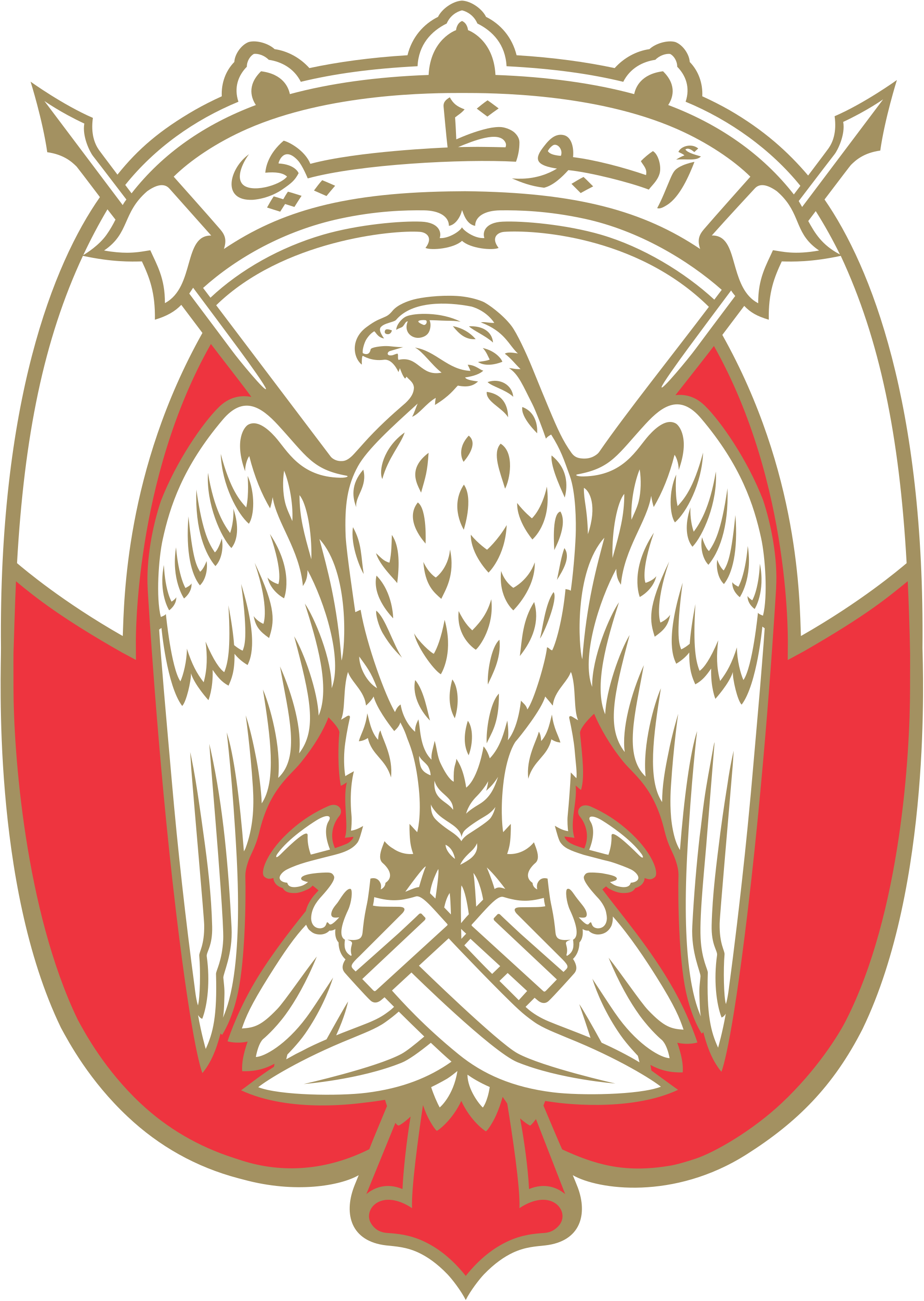
Abu Dhabi Government
His Highness Sheikh Khalifa bin Zayed Al Nahyan is the Ruler of Abu Dhabi Emirate. He is assisted by the the Executive Council, which is the governing body of the Emirate. The Executive Council is chaired by His Highness General Sheikh Mohamed bin Zayed Al Nahyan. The Council supervises the government departments which are equivalent to ministries and have clearly specified mandates. They administer various areas of activities ranging from economic development to pensions, environment, health, food control, education, culture and heritage, among others. The Executive Council monitors the progress of the government-sponsored projects, the development of services and the improvement of governmental performance in Abu Dhabi.
The members of the Executive Council are chairmen of Abu Dhabi's government departments and authorities, in addition to appointed members by the Ruler of the emirate. The government departments were formed in line with the Article 116 of the constitution.
The role of the Executive Council is central to Abu Dhabi’s governmental structure. It consists of the General Secretariat of the Executive Council (GSEC), the Executive Affairs Authority (EAA), the Executive Committee and the subcommittees. The General Secretariat of the Executive Council (GSEC) is an administrative body entrusted to propose public policies and strategies to be decided on by the Executive Council, whereas the Executive Affairs Authority (EAA) provides strategic policy advice to the Chairman of the Abu Dhabi Executive Council. The Executive Committee is tasked with deciding on the projects submitted to the Executive Council. The Subcommittees include Economic Development Sub Committee, Social Development Sub Committee and Infrastructure and Environment Sub Committee
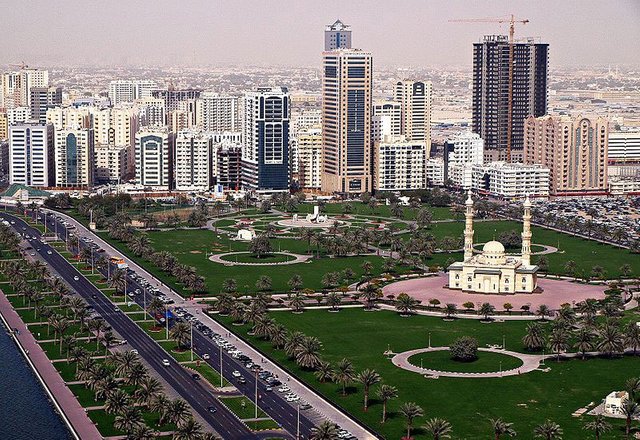
Industrial Oasis
Economy
The economy of Abu Dhabi is largely based upon the revenue generated from natural resources. Petroleum and natural gas play a vital role, although some other sectors are also emerging in order to support the city’s economy due to the global depreciation of fossil fuels.
Abu Dhabi experiences a rapidly growing economy with a high GDP and per capita income. It is not only the wealthiest emirate of the UAE but also qualifies as one of the wealthiest cities in the world.
Abu Dhabi’s GDP nearly reached $100 billion in 2006, a huge leap from a mere $40 billion in 2002, and considering it only has a population of around 1.4 million this is quite remarkable. Abu Dhabi’s GDP per capita income also nearly touched the $70,000 mark which is far above the average income of the United Arab Emirates itself and it ranks third in the world after Luxembourg and Norway.
The oil sector at the moment supplies most of Abu Dhabi’s GDP, providing over $60,000 million in 2006 and accounting for nearly 60% of it in 2007. Other sectors are slowly growing and in the future Abu Dhabi is expecting non-oil sectors such as tourism and property to account for nearly half of its total GDP output.
In order to achieve this target, authorities have re- invested Abu Dhabi’s oil revenues into major projects across the city. The Abu Dhabi Investment Authority (ADIA) is currently estimated at $875 billion, being the world’s wealthiest sovereign fund, in terms of total asset value.
To boost the tourism industry, fancy hotels and entertainment facilities have been constructed all over Abu Dhabi. The latest instalment is a branch of France’s Louvre Museum on the attractive Saadiyat Island. This extraordinary oil exporting island has been transformed into a luxury resort with art centres and shopping malls. | Although most building plans are underway, the latest economic developments in the Western world, the “credit crunch” (2008), have influenced decisions made by foreign investors in the UAE. Due to this, investors have prioritised some of their major projects because money is not as easy to borrow anymore.
Despite this, Abu Dhabi is still in a strong economic position as it has not incurred any direct debt in over a decade. The emirate continues to be the highest contributor to the UAE’S total GDP and carries on providing generous financial subsides to the smaller emirates in the country.
Demographics
Abu Dhabi maintains a demographic structure much like that of other areas throughout the world where much of the population lives in urban areas. The urban population is 1,698,961 and the rural population is 1,085,529. There are more males than females within Abu Dhabi, with 1,831,741 males and 952,749 females. The city also has a large UAE national population at 536,741 people. The average life expectancy within Abu Dhabi is 76 years for men and 79.9 years for women.
Employment
The labor force within Abu Dhabi is quite high at 83.1% of the total population. However, the number of women in the workforce is rather low when compared to other parts of the world. Women make up just 21.4% of the overall population of working age people. Unemployment within Abu Dhabi is low as there are plenty of employment opportunities within the city, and the cost of living is quite high. The current unemployment rate is just 3.7%, which is very low when considering the fact that other countries and cities have unemployment rates into the double digits.
Education
The education system within the United Arab Emirates is truly remarkable and in Abu Dhabi alone there are 442 different schools teaching 366,029 students. Upon graduating, those that choose to stay in Abu Dhabi are privileged to have the opportunity to attend one of nine universities. The percentage of illiteracy in Abu Dhabi is low due to the excellent school system. The numbers reflect the fact that only 6.4% of the population above the age of ten are considered illiterate. The numbers can be broken down further between men and women, with 6.5% of men and 6.2% of women falling into the category of illiteracy.
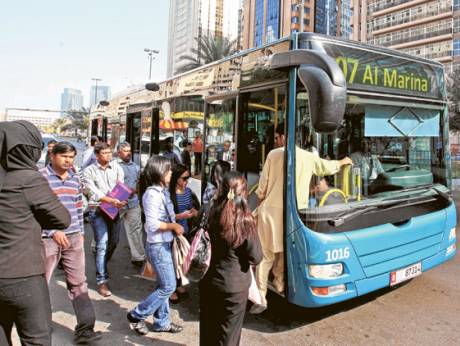
Transportation
Although most of the citizens and non-residents of Abu Dhabi travel by private vehicles, there is a public transportation service within the city. It is not as expansive as some since the service has only been active since 2008, but it does boast 650 buses servicing the 95 routes in varying parts of Abu Dhabi. To date, the service has provided transportation to more than 50 million people and counting.
Language
The official national language in Abu Dhabi is Arabic, spoken widely among the native Arab community. The high concentration of expatriates from the Indian subcontinent has made Hindi, Urdu and several other languages from the region like Malayalam also fairly common.
English of course is the unofficial official language, even though Arabic is the official business language. Most of the official documentation is in Arabic, and some applications like educational and marriage certificates are accepted in this language only.
Road signs, street names and other public signage are always displayed in both Arabic and English
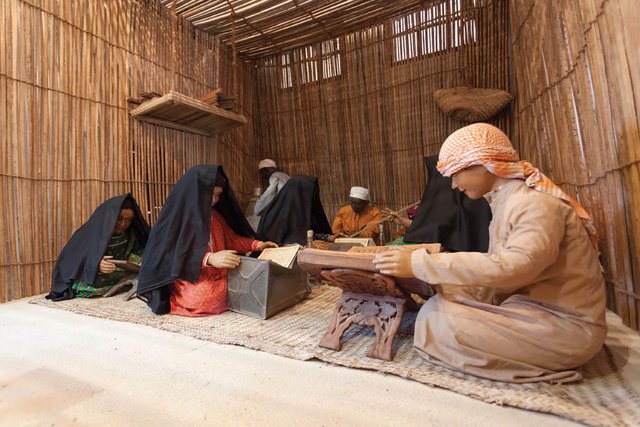
Culture & Lifestyle
The combination of international influences and a strong commitment to local heritage has created an intriguing mix of new and old. Abu Dhabi's culture is firmly rooted in Arabia's Islamic traditions. Islam is more than a religion; it is a way of life that governs everyday events from what to wear to what to eat and drink. The UAE's culture and heritage is inextricably linked to its religion, and it is a shining example of Islam's true commitment to tolerance and hospitality.
Foreigners are free to practise their own religion and the dress code is liberal. Women are able to drive and walk around unescorted. Among the most highly prized virtues are courtesy and hospitality, and visitors are sure to be charmed by the genuine friendliness of the people. Despite the speed of economic development over the last 30 years, Abu Dhabi continues to promote traditional cultural and sporting events, such as falconry, camel racing and traditional dhow sailing.
The indigenous people are very sensitive to their houses. You shouldn’t enter a living room with your shoes on. Naturally, visitors are very unlikely to remember all traditions and customs of Abu Dhabi, but learning some basic rules and etiquette will not be superfluous. For example, the locals never greet each other with a handshake. Here it is replaced with a small bow. During a walk in the city a man and a woman should not hold their arms even if they are legal spouses. Drinking alcoholic beverages is allowed in specially designated areas only. The locals have quite severe rules concerning the consumption of alcohol. In general, the townspeople are very friendly with visitors. They are characterized by unhurried type of communication and helpfulness. Many of the local people speak English, so it will be really simple for tourists to find a "common language" with them.
Local people are generous and hospitable. They usually meet guests in a special room called "majlis". In the center of the room there is always a large table, on which are served dishes with dates, nuts and other treats. The room is traditionally decorated with most luxurious carpets and posh interior. In this way owners of the house are always ready to accept new guests. The only thing they need to do is to serve fragrant Arabic coffee. Guests, in their turn, must try a bit of fujal - a delicious snack made of nuts and dried fruit.
National Dress
UAE nationals usually wear traditional dress in public. For men, this is the kandura - a white full length shirt-like garment, which is worn with a white or red checkered headdress, known as a ghutra. This is secured with a black cord (agal). Sheikhs and important businessmen may also wear a thin, gold-trimmed robe (bisht) over their kandura at important events. In public, women wear a long, loose black robe (abaya) that covers their normal clothes - plus a headscarf (sheyla).
The abaya is often of very sheer, flowing fabric with intricate embroidery and beadwork along the wrists and hemline. Sheylas are also becoming more elaborate and a statement of individuality, particularly among the young. Headwear varies with some women wearing a thin black veil covering their face and others, generally older women, wearing a leather veil (burka), which covers the nose, brow, cheekbones and lips.
Photography
while normal tourist photography is acceptable, it is polite to ask permission before taking photos of people, particularly women. Photographs of government buildings, military installations and ports and airports should not be taken. Also, cameras may be banned in public areas designated for women and children only.
Alcohol and drinking
Do:
Enjoy alcohol at licensed bars (usually attached to hotels) and at home. Most bars in Abu Dhabi are well stocked - unlike other Middle Eastern cities. You can purchase alcohol for home consumption from a number of special liquor outlets (e.g. Spinney’s) which technically require a special expat liquor permit but often accept any proof that you’re not a native.
Don’t:
Don’t get excessively drunk in public. You’re much more likely to get locked up for being drunk and disorderly in the UAE than at home and any drink aggravated offences (especially driving offences) are likely to result in deportation. Any alcohol in the blood while driving is illegal.
Driving in Abu Dhabi
Do: get a car. Visiting nearby towns like Al Ain or Dubai can only really be done by automobile. Unlike neighboring Saudi Arabia it’s legal for women to drive.
Don’t:
Don’t expect driving to be easy. The UAE is perceived to have some of the world’s most dangerous roads due to the reckless behavior of many young men. The way roads are laid out and numbered is also very different to the Western style and takes a bit of getting used to.
What to wear
Do:
Feel free to dress in the Western style. Again the UAE is fairly liberal when compared to some other Middle Eastern nations. At resorts, malls and health clubs in particular you’re free to wear pretty much whatever you like.
Don’t:
Don’t push it too far. A certain amount of respect for local customs is advised. Tight or revealing clothing will attract unwanted attention on the streets and you should cover your shoulders and legs when entering government buildings. Do not wear bright and revealing clothes when you make a walk in the city. Tight clothes are also not recommended - it can confuse the locals.
Religious beliefs and customs
Do:
Get to know Islamic beliefs and practices. While other religions are protected, Islam is central to UAE life so familiarity with prayer routines, Islamic festivals and the timing and consequences of Ramadan will greatly ease your transition into Abu Dhabi.
Hand shake
Do:
Shake hands at the end of a meeting as well as at the beginning.
Don’t:
Offer a handshake to an Arabic woman first, but wait for her to offer her own hand.
Offers of food or drink
Do:
Accept offers of food or drink made by an Arabic host to refuse might be considered rude.
Don’t:
Be overly complimentary in the home of an Arabic host this might be construed as a request that the complimented item be given to you as a gift.
Source
https://www.abudhabi.com/v/history/
https://www.abudhabi.ae/portal/public/en/homepage/government/
http://worldpopulationreview.com/world-cities/abu-dhabi-population/
https://visitabudhabi.ae/en/travel/essential.info/culture.and.lifestyle
http://www.orangesmile.com/travelguide
Congratulations @gmsan! You have received a personal award!
Click on the badge to view your Board of Honor.
Congratulations @gmsan! You received a personal award!
You can view your badges on your Steem Board and compare to others on the Steem Ranking
Vote for @Steemitboard as a witness to get one more award and increased upvotes!